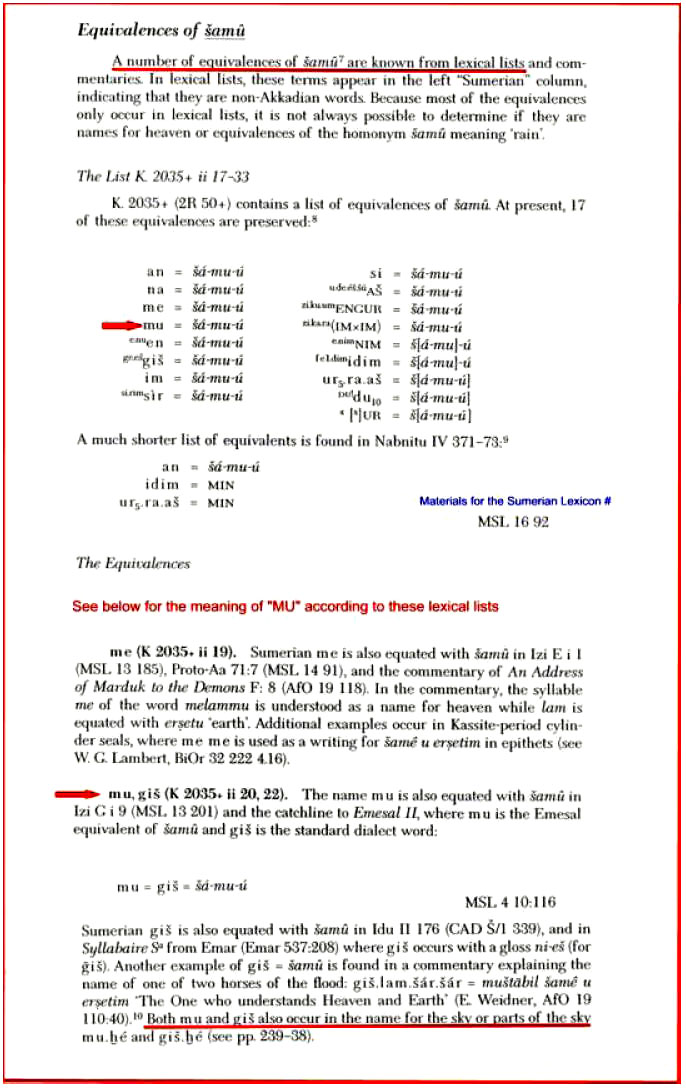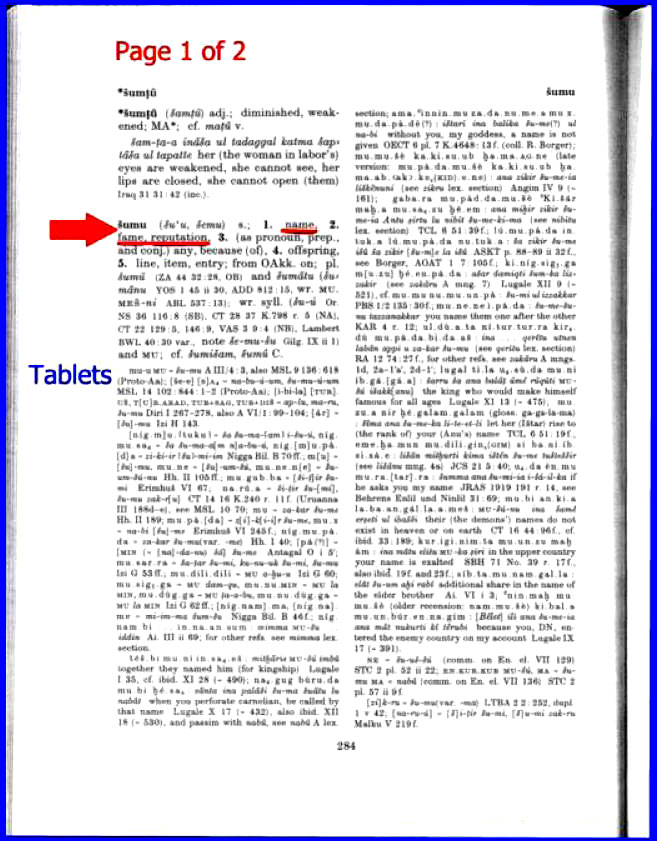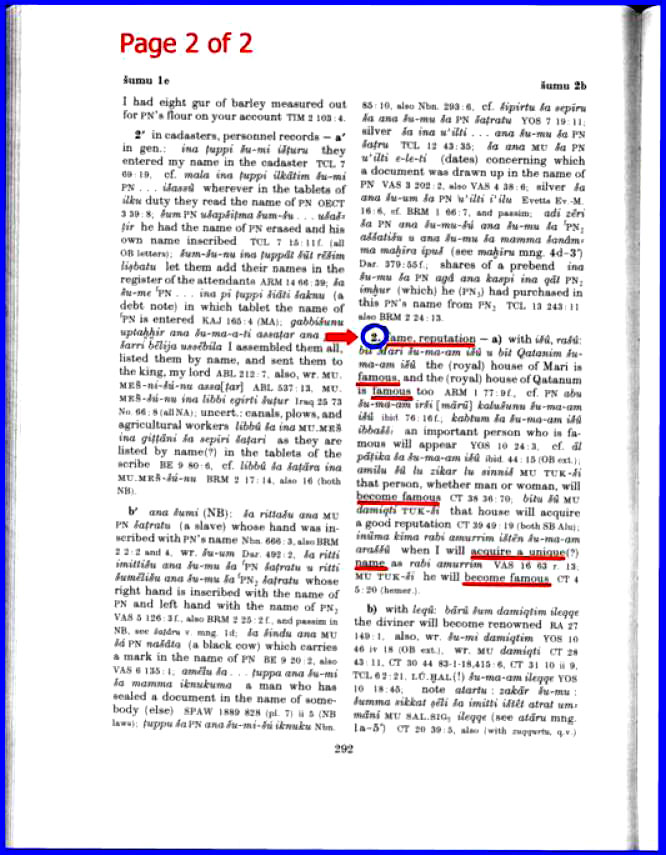|

by
Michael S. Heiser
author of The Fašade
Ph.D. candidate, Hebrew and Ancient Semitic Languages,
University of Wisconsin-Madison
from
FacadeNovel Website
recovered through
WayBackMachine Website
The work of Zecharia Sitchin was brought
to my attention just over a year ago, shortly after I completed my
book,
The Facade. As a trained scholar in ancient Semitic languages
[i] with a lifelong interest in UFOs and paranormal phenomena, I was
naturally enthused about Mr. Sitchin's studies, particularly since I
had also heard he was a Sumerian scholar. I thought I had found a
kindred spirit, perhaps even a guide to navigating the possible
intersection of my academic
 disciplines with ufology, a discipline
unfairly ridiculed by the academic mainstream. Unfortunately, I was
wrong. disciplines with ufology, a discipline
unfairly ridiculed by the academic mainstream. Unfortunately, I was
wrong.
What follows will no doubt trouble some readers. I have come to
learn that Mr. Sitchin has an avid following, and so that is
inevitable. Nevertheless, I feel it my responsibility as someone who
has earned credentials in the languages, cultures, and history of
antiquity to point out the errors in Mr. Sitchin's work. Indeed,
this is the academic enterprise. I have yet to find anyone with
credentials or demonstrable lay-expertise in Sumerian, Akkadian, or
any of the other ancient Semitic languages who positively assesses
Mr. Sitchin's academic work. [ii]
The reader must realize that the substance of my disagreement is not
due to "translation philosophy," as though Mr. Sitchin and I merely
disagree over possible translations of certain words. What is at
stake is the integrity of the cuneiform tablets themselves, for the
ancient Mesopotamians compiled their own dictionaries, and the words
Mr. Sitchin tells us refer to rocket ships have no such meaning
according to the ancient Mesopotamians themselves. To persist in
embracing Mr. Sitchin's views on this matter (and a host of others)
amounts to rejecting the legacy of the ancient Sumerian and Akkadian
scribes whose labors have come down to us from the ages.
Put simply, is it more coherent to
believe a Mesopotamian scribe's definition of a word, or Mr.
Sitchin's.
Lexical Lists:
An Introduction to Sumero-Akkadian Dictionaries
[iii]
Lists of words are a common feature among the thousands of Sumerian
and Akkadian cuneiform tablets which have been discovered by
archaeologists. Many are just groupings of common words, while
others represent an inventory of the word meanings of the languages
used in Mesopotamia. These are the lists of importance for our
purposes. These "lexical lists," as scholars call them, appear among
the earliest cuneiform tablets, at the beginning of the third
millennium B.C.
These lists were indispensable to the
19th century scholars who deciphered the Sumerian and Akkadian
texts, for they were used to compile modern dictionaries of these
languages. Today all major lexical texts have been published in the
multi-volume set, Materials for the Sumerian Lexicon, [iv] begun by
Benno Landsberger in the 1930s. The modern Sumerian Dictionary
Project still underway at my alma mater, the University of
Pennsylvania, utilizes these lists.
The two standard modern dictionaries,
W. von Soden's Akkadisches Handworterbuch (3 volumes) and
the Chicago Assyrian Dictionary, also utilize these materials. It is
indeed a rare instance where ancient dictionaries of a dead language
form the core of the modern dictionaries used by scholars of today.
Such is the case for the ancient languages of Sumer and Akkad.
Sadly, Mr. Sitchin neglects these resources.
The typical arrangement of the scribes on the multi-lingual lexical
tablets was to place the Sumerian pictogram on the left hand side.
Going from left to right, the next column often had the name of the
Sumerian pictogram used by scribes, followed by the Akkadian
translation. At times another column followed, giving the
translation in other ancient languages, such as cuneiform Hittite.
In this way, the Mesopotamians themselves created bilingual or
multi-lingual dictionaries for the languages of the people of
Mesopotamia - and for us, if we care to use them!
First
Things: The Meaning of Sumerian "MU"
On pages 140-143 of
The 12th Planet, we read that Mr. Sitchin
defines the Sumerian MU as "an oval-topped, conical object,"
[v] and "that which rises straight." [vi] Mr. Sitchin cites no
Sumerian dictionary for these meanings. A check of the dictionaries
contained in Sumerian grammars and the online Sumerian dictionary
reveal no such word meanings. [vii] But why trust modern scholars
when we can check with the Mesopotamian scribes themselves.
In his technical but stimulating study of Sumerian and Mesopotamian
terminology for the cosmos, Mesopotamian Cosmic Geography,
Mesopotamian scholar W. Horowitz lays out the meaning of the
Sumerian word "MU" directly as the Mesopotamian lexical lists have
it. What follows below is his layout. In discussing the meaning of
the Akkadian word "shamu," in his book, Horowitz gathered all the
lexical list data for that word. [viii] Note that the word "MU" in
the left-hand (Sumerian) was among the cuneiform dictionary entries
for "shamu."
A discussion of the meanings follows the
entries. Briefly, "shamu" in Akkadian here means "heaven" (or part
of the sky/heavens) or perhaps "rain." [ix] According to the scribal
tablets themselves, the meaning is not "that which rises straight,"
or "conical object" (i.e., "rocket ship"). This is the verdict of
the scribes themselves, not this writer.
The red explanatory insertions are my
own:

Mr. Sitchin goes on to claim (p. 143)
that the Sumerian syllable MU was adopted into Semitic languages as
"SHU-MU," which he translates as "that which is a MU" (by
implication, "that which is a rocket ship"). Allegedly, "SHU-MU"
then morphed into Akkadian shamu and Biblical Hebrew shem.
We will consider the Akkadian word
first, and then the Hebrew word.
The Meaning of
Akkadian "shamu"
Does Akkadian shamu come from Sitchin"s "SHU-MU". Does
Sumerian even have a word that means "that which is a MU". Contrary
to Mr. Sitchin, Akkadian shamu does NOT derive from SHU-MU,
nor does shamu mean "that which is a MU."
First, Mr. Sitchin's translation of shu-mu presupposes that "SHU-"
is what's called in grammar a "relative pronoun" (the classification
of pronouns in all languages that mean: "that which"). Mr. Sitchin
is apparently unaware of Sumerian grammar at this point, because the
Sumerian language does not have a class of pronouns that are
relative pronouns! One need only consult a Sumerian grammar to find
this out, such as John L. Hayes, A Manual of Sumerian
Grammar (p.88).
Second, in light of the fact that there is no "SHU-MU" form in
Sumerian (since Sitchin's relative pronoun "SHU-" is concocted), it
logically follows that Akkadian shamu did not derive from a
Sumerian "SHU-MU." Nevertheless, Akkadian does have a word shumu,
but it does not come from Sumerian "SHU-MU" (since that combination
never existed in light of Sumerian grammar's lack of the assumed
relative pronoun). In fact, the shumu of Akkadian undermines
Sitchin's entire argument when it comes to the Tower of Babel
account (see below for more on Akkadian shumu).
Returning to shamu, the Akkadian word shamu can have multiple
meanings, depending on its original root origin. The lexical lists
above presuppose a shamu that comes from the Akkadian word
shama'u or shamamu, both of which mean "heaven," as in a
place or portion of the sky. Notice how similar shamu is to both
shama'u and shamamu. Only the extra letter marks them as different,
marked either by an apostrophe (shama'u) in English [x] or an "m" (shamamu).
It turns out that our word shamu
in the lexical lists above is a contraction of either shama'u
or shamamu (the word loses a letter just like in English
"didn't" for "did not").
The Meaning of
Biblical Hebrew "shem"
As noted above, there is an Akkadian word shumu. This word has its
own meaning, a meaning that did in fact get absorbed into Biblical
Hebrew, from whence Hebrew shem originated. Both this
Akkadian shumu and Hebrew shem mean "name" or "renown," the
word meanings Mr. Sitchin ridicules in The 12th Planet on his way to
fabricating rocket ships in Mesopotamia and the Biblical Tower of
Babel story.
Other than the concocted word origin (SHU.MU),
how do we know that Mr. Sitchin's word meanings are wrong. Here are
the entries in the gold standard Akkadian dictionary, The Chicago
Assyrian Dictionary painstakingly produced over several decades by
scholars of the Oriental Institute of the University of Chicago.
Note that the entries have specific references in which tablets (and
hence contexts) this word shamu occurs. [xi] The word
meanings are right from the tablets themselves.
Unlike Mr. Sitchin's work, which cites
no dictionary entries for his meanings:


A Word on the Tower
of Babel Accounts in both Sumerian and Biblical Literature "
The Common Sense of
Context
In the absence of any linguistic support for his rocket ships, Mr.
Sitchin's supporters might claim a linguistic cover-up. No, scholars
aren't hiding "rocket ship" meanings in the cuneiform tablets. In
fact, the discerning reader of the Sumerian and biblical Babel
accounts need not retreat to linguistics at all to know Mr.
Sitchin's theories are nonsensical.
Consider first the biblical story of
Genesis 11:1-9:
1 And the whole earth was of one
language, and of one speech.
2 And it came to pass, as they
journeyed from the east, that they found a plain in the land of
Babylon; and they dwelt there.
3 And they said one to another, Go
to, let us make brick, and burn them thoroughly. And they had
brick for stone, and slime had they for mortar.
4 And they said, Go to, let us build
us a city and a tower, whose top [may reach] unto heaven; and
let us make us a name (shem) lest we be scattered abroad upon
the face of the whole earth.
5 And the Lord came down to see the
city and the tower, which the children of men built.
6 And the Lord said, Behold, the
people are one, and they have all one language; and this they
begin to do: and now nothing will be restrained from them, which
they have imagined to do.
7 Let us go; let us go down, and
there confound their language, that they may not understand one
another's speech.
8 So the Lord scattered them abroad
from thence upon the face of all the earth: and they stopped
building the city.
9 Therefore is the name of it called
Babel; because the Lord confounded the language of all the earth
there: and from thence did the Lord scatter them abroad upon the
face of all the earth.
The point here is brief. Note two
obvious facts from the plain English:
(1) The people are not building the
shem; they are building "a city and a tower" (verse 4).
The Hebrew words here are not shem in either case, they are
ir ("city"; pronounced ghir) and migdal ("tower").
The word shem comes later in the verse, and is the
purpose for building the city and tower to make a great name for
themselves, just what the Akkadian word shumu means!
(2) The tower is being built with brick and mortar (verse 3) "
what rocket ships are made of bricks and mortar"
Again, Mr. Sitchin"s supporters could
claim some sort of Christian or Jewish conspiracy to obscure the
construction of a rocket ship. If so, then the Sumerians themselves
started the cover-up (leaving only Mr. Sitchin correct).
Here's their version, from
Enuma Elish
(Tablet VI: lines 59-64):
The Anunnaki set to with hoes
(Unusual tools for rocket-building!)
One full year they made its bricks
(A rocket made of bricks! Sounds like Genesis 11.)
They raised up Esagila, the counterpart to Apsu,
They built the high ziggurat of counterpart Apsu
(A ziggurat, not a shem or shumu)
For Anu-Enlil-Ea they founded his dwelling.
The point here is that in the very story
Mr. Sitchin uses to create a parallel between Sumer and the
Old
Testament, the Anunnaki are clearly constructing a tower made of
bricks - not a spaceship. No, Virginia, there were no rocket ships
in Mesopotamia.
References
[i] I hold two masters degrees, one
in Ancient History from the University of Pennsylvania (my
fields were Egyptology and Syria-Palestine), and another from
the University of Wisconsin-Madison in Hebrew and Semitic
Languages. I am currently working on my dissertation at the
latter institution in Hebrew and Semitic Languages to complete
the PhD. I am in the final stage of that task. My coursework
enables me to do translation work in roughly a dozen ancient
languages, among them Hebrew, Aramaic, Greek, Akkadian,
Sumerian, Egyptian hieroglyphs, Phoenician, Ugaritic, and
Moabite.
[ii] I have only read about Mr. Sitchin's credentials (as a
journalist, not an ancient linguist) from websites and book
flaps written by people with no background in the ancient
languages. Thus far, I have been unable to find proof that Mr.
Sitchin knows any of the languages he references in his books -
and his books provide little that would convince me he does.
[iii] Much of what follows in this section is drawn from the
excellent article "Ancient Sumerian Lexicography," by University
of Chicago Sumerian professor (emeritus) Miguel Civil (in
Civilizations of the Ancient Near East, 4 vols., ed. Jack M. Sasson, 1995).
[iv] Entries are in German.
[v] Page 140. Mr. Sitchin acknowledges that the object on the
Byblos coin is not described with the word "MU" on the coin (the
writing is Greek, and the written language of Byblos was Byblian-Phoenician),
but due to the object's shape combined with Mr. Sitchin's
contrived word meaning, the object "can only be a mu" (p. 140).
[vi] Page 141. According to Mr. Sitchin, this is the syllable's
"primary meaning." No dictionary or tablet / lexical list
information is supplied by Mr. Sitchin for this claim.
[vii] For example: M.L. Thomsen, The Sumerian Language: An
Introduction to Its History and Grammatical Structure
(Copenhagen 1984); J.L. Hayes, A Manual of Sumerian Grammar and
Texts: Second Revised and Expanded Edition (Malibu, 2000);
A. Deimel, Sumerisches Lexikon (Rome 1947).
[viii] The extant lexical lists available are labeled by
scholars as K.2035 (column ii 17-33) and "2R50." The "MSL number
in the right hand column is the number of the list as it is
reproduced in Landsberger's Materials for the Sumerian Lexicon.
Interestingly, the Sumerian "ME" (described by Sitchin as a
space suit) is also equated with shamu, and thus shares the
meanings noted above.
[ix] The meaning of shamu in Akkadian depends on its AKKADIAN
root origin (not a contrived Sumerian heritage); see the
discussion.
[x] English doesn't have the sound represented by this Semitic
letter, the aleph - a stop in the back of the throat.
[xi] Due to the problem of file size caused by the images, I
have selected only two pages of what is actually a multi-page
entry. The reader is directed to the Chicago Assyrian Dictionary
for the full discussion.
|




